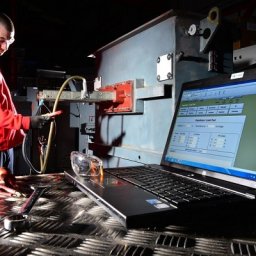To understand partial discharge testing, it’s best to first understand partial discharge. Partial discharge can be described as small electrical sparks that occur in stator windings whenever there are small air gaps or voids in or around the insulation. Once sparking occurs, the stator windings start to deteriorate. The larger the void in insulation, the larger the possible discharge resulting in possible machine failure.
Partial discharge testing is a leading indicator of machine failure. If left undetected, it can eventually lead to complete deterioration of the electrical insulation which is one of the principal causes for forced outages of generators and motors.
Using online monitoring to identify partial discharge can help avoid service failures, extend the time between rewinds and outages and plan maintenance based on machine condition.
There are two different methods for partial discharge testing. Off-line measurements occur where the machine is disconnected and the testing occurs from an external source. Online testing occurs when the rotating machine is kept running or energized. Continuous or online measurements are made under real operating conditions; however, noise can be a factor. To circumvent this problem, one would need to ensure that there is adequate distance, and higher filter frequencies are used.



